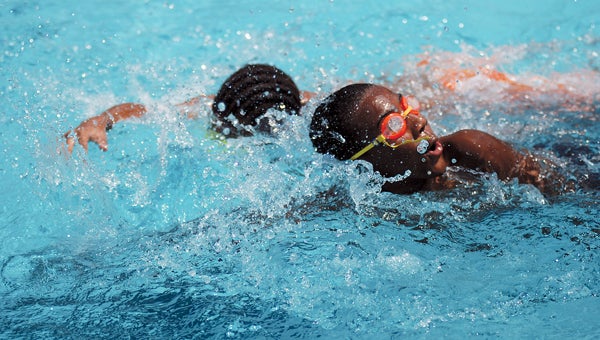State gripped by heat wave
Published 2:55 am Monday, July 25, 2011

Codeerin Wilkerson (orange goggles) and Bryan Steely (submereged) beat the heat Thursday by taking a dip in the Greenville YMCA’s pool. (Advocate Staff/Austin Nelson)
Alabama is no stranger to sweltering summer days.
But this summer, the mercury in those outdoor thermometers has been climbing even higher than usual.
In the month of July alone, nine heat-related records have been broken and 11 more have been tied, according to the National Oceanic and Atmospheric Administration.
“This heat is dangerous on many levels,” Jack Hayes, director of the National Weather Service, said in a news release issued by the organization. “Temperatures and humidity levels are high, the heat will be prolonged, and very warm temperatures overnight won’t provide any respite. All of these factors make this an unhealthy situation.”
Parts of Alabama are under a Heat Advisory issued by the NOAA, but so far Butler County has not found its way onto the list. The extreme heat isn’t limited to Alabama. According to NOAA, approximately 995,000 square miles and 141 million people in the United States are under some sort of heat alert (Excessive Heat Warning or Watch or Heat Advisory).
To make matters worse, the high humidity that has engulfed the state is making already hot temperatures seem even hotter. Temperatures in the 90s to near 100 degrees feel as hot as 115 degrees or higher.
The combination of record-breaking heat and humidity in Alabama can be dangerous.
Those outdoors should be aware of the potential health risks, such as heat stroke, that accompany high temperatures.
“Heat stroke is a life-threatening emergency,” Dr. Tom Miller, assistant state health officer, said. “A person with heat stroke is likely to be unconscious or unresponsive, so he or she cannot safely consume any liquids. Under no circumstances should you give any alcohol to a person with heat stroke or any heat illness.”
Heat stroke is the most serious heat-related illness. It occurs when the body becomes unable to control its temperature. The body’s temperature rises rapidly, the sweating mechanism fails and the body is unable to cool down. Body temperature may rise to 106 degrees F or higher within 10 to 15 minutes. Heat stroke can cause death or permanent disability if emergency treatment is not provided.
Warning signs of heat stroke vary, but include the following:
* An extremely high body temperature (above 103 degrees Fahrenheit)
* Red, hot and dry skin (no sweating)
* Rapid, strong pulse
* Throbbing headache
* Dizziness
* Nausea
* Confusion
* Unconsciousness
Get the person to a shady area, cool rapidly in a tub of cool water, place in a cool shower, spray with cool water from a garden hose or splash with cool water and fan vigorously. Monitor body temperature and continue cooling efforts until the person’s body temperature drops to 101 to 102 degrees F. If emergency medical personnel are delayed, call a hospital emergency room for further instructions.
Follow these preventive measures to avoid heat illnesses:
* Drink more fluids, and avoid beverages containing alcohol or caffeine
* When temperatures are extreme, stay indoors, ideally in an air-conditioned place
* Take a cool shower or bath, and reduce or eliminate strenuous activities during the hottest time of the day
* Protect yourself from the sun with a wide-brimmed hat, light-colored, loose-fitting clothing and use a sunscreen of SPF 15 or higher
* Never leave pets or people in a parked vehicle.
For more information, visit www.adph.org.





